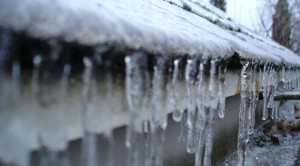Minnesota Damage Restoration
Water cleanup, repair and restoration can be a costly operation. In fact, damage from water is one of the top reasons why most home insurance plan holders make claims. Most damages are caused due to burst pipes, leaky appliances and flooded basements. When your home suffers from storm damage, a flooded basement, sewage damage, immediate action is required to remove the water and minimize the damage and loss.
The winters are a time when water intrusion into your home has an added opportunity to occur when it snows and the temperatures remain at or below freezing for a minimum of 2-3 days. Although the first half of the 2011-2012 Winter storm season has been relatively mild, it is still possible for Old Man Winter to pack a powerful punch.
Winter weather that is more severe than usual in your area can cause a number of problems ranging from water leaks to burst pipes, flooded basements, and roof collapses. These problems are frequently thought of as a northern climate problem. However, whenever an unusually cold spell occurs or a particularly heavy ice or snow accumulation builds up for the area, some buildings start getting into trouble.
Ice Dams
Ice dams — or ice buildup on roof eaves are all too obvious and all too familiar to Minnesota homeowners.
Snow buildup on your roofs can form what are called “ice dams” and leak water into your attic. If enough moisture penetrates through your roofing materials and gets absorbed in the insulation or sheet rock, you won’t notice it until the damage has reached a level that could require a professional to remove it.
If you uncover snow-related damage to your home as you are digging out from a blizzard, keep in mind the insurance industry’s approach to paying water-related damages. Snow, after all, is but frozen water and insurers have canceled policies, reduced coverage and raised rates to fight the growing numbers of claims paid for water- and moisture-related damage. Insurers also encourage policy holders to do what they can to avoid the need for such claims.
If you are a repeat “offender” with previous moisture-related claims or didn’t previously take steps to prevent or minimize snow damage and damage that could result when snow melts, you could lose your policy, get hit with higher premiums or discover the snow-related damage simply isn’t covered.
Maintain Your Home Throughout A Snow Storm
“Mold is an issue right now. If you didn’t clean up that puddle of water for three months and it creates mold, it gets tricky. The industry prefers that you take care of your home as much as possible.
Houses that have been flooded are at serious risk for molds, especially in areas when are high humidity and temperatures provide the mold with the perfect place to reproduce before cleanup begins. Juries have awarded huge sums of money to homeowners who initiated lawsuits against their insurance companies, with most awards given to people whose insurer did not pay for moisture-related repairs in time to prevent severe mold problems.
Freezing conditions such as burst pipes or ice dams, a condition where water is unable to drain properly through the gutters and seeps into a house causing damage to ceilings and walls, is covered (while the actual pipe itself is generally not covered). However, there is generally a requirement that the homeowner has taken reasonable steps to prevent these losses by keeping the house warm and properly maintaining the pipes and drains.
Standard homeowners policies typically cover losses related to bursting pipes, ice dams, wind damage, wind driven moisture damage, damage or collapse caused by the weight of ice or snow and backed-up sewers and drains.
Remember your homeowners insurance covers sudden and unexpected damages and not maintenance related damages. If there is a pipe burst you will have a better chance to argue for payment if you have done your part well.
To Prevent Snow Storm-Related Damage:
- Watch for snow accumulation on the downwind side of a higher-level roof, where blowing snow collects.
- Be wary of snow or rain that freezes in gutters causing an “ice dam” that later can damage ceilings and roofing structure as melting ice spreads under roof shingles. Keep your gutters clean of leaves and debris to help prevent ice dams.
- Remove tree and plant branches that become heavy with snow. Remove icicles hanging from gutters and over walkways.
- Keep an eye on nearby sewers and drains. As snow melts, water can back-up sewers and clog drains with debris, resulting in flooding, that may not be covered by insurance.
When dealing with damage from water, calling in professional help is always preferable to attempting do-it-yourself methods. These do-it-yourself methods can be tedious, and the task on hand may not be completed thoroughly. Calling a Damage Restoration Company will help you to document and account for the damage, which helps when trying to get compensation through a damage insurance claim.





